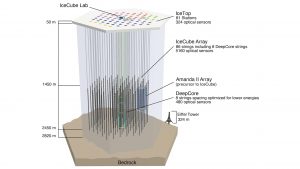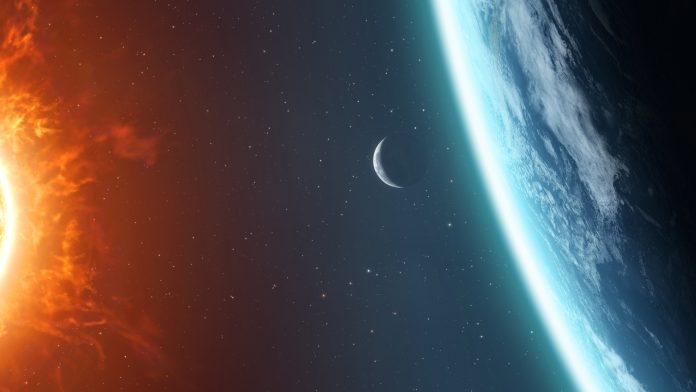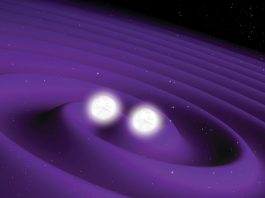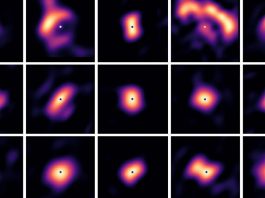CMA is exploring multimessenger astrophysics to unveil some of the Universe’s outstanding mysteries through quadruple probes.
Multimessenger astrophysics has recently emerged as a distinct discipline which provides unique insights into the processes and properties of the highest energy astrophysical sources, while opening up a vast new arena for exploring new physics beyond the reach of terrestrial laboratories. The new messengers entering now into the fray are the high energy cosmic rays, neutrinos and gravitational waves. These, along with the already widely used photons, can provide a complete set of physical data which, like a previously dislocated jigsaw puzzle, can now be (re)assembled once more by physical theory. This is the focus of the Center for Multimessenger Astrophysics (formerly Center for Particle and Gravitational Astrophysics), at Pennsylvania State University, USA.
Measuring the messengers
The measurement of each of the above messengers involves very different technologies and analysis methods, and the higher the messenger energy the harder it is to measure and analyse them. As such, this typically requires large and expensive ground or space-based instruments involving multiple institutions, and massive computational efforts.
Scientists from the Center for Multimessenger Astrophysics (CMA) play a significant and in several cases leading role in most of the major (single messenger) international experimental collaborations. In 2013, CMA scientists also started a pioneering project called AMON (Astrophysical Multimessenger Observatory Network), which is dedicated to providing alerts, co-ordinating observations obtained via different messengers and facilities, and to exploiting the potential for combined analyses to boost the joint significance of even subthreshold disparate signals from the same sources.
Theoretical ideas have provided, and continue to provide, the motivation for much of the experimental work and, in tandem with the latter, a number of front-line theoretical and numerical simulation projects are being carried out at the CMA as well as elsewhere.
Gravitational wave astrophysics
This area has emerged in the last few years as an exciting new field, offering a completely different view of the Universe. The CMA’s gravitational astrophysics group, as part of the LIGO Laser Interferometric Gravitational Wave Observatory consortium, has played a leading role in the discovery of binary black hole merging systems which arise from the evolution of massive stars. They have also been leaders in the detections of the first confirmed binary neutron star systems, GW170817 and GW190425, the former having also been detected as a gamma-ray burst source, i.e. a multimessenger source. Our theoretical calculations indicate that high energy neutrinos may be expected from neutron star mergers, which may be detectable by future neutrino detectors. The CMA group also played a major role in the discovery of the first neutron star-black hole binary candidate systems. Furthermore, the team are currently engaged in the LIGO A+ upgrade, as well as planning for the future, significantly larger Cosmic Explorer detector, in the same 10-1000 Hz frequency range as LIGO, and are preparing for the LISA Laser Interferometer Space Antenna, at frequencies 10-4-10-1 Hz where mergers of massive black holes lurking at the centre of galaxies can be detected.

Neutrino astrophysics
This area, initially launched over 40 years ago with the detection of the Sun and a supernova in our galaxy at MeV energies, languished for a long time until being jolted by recent observations at higher energies with IceCube, a cubic kilometre detector located in Antarctica, in which CMA scientists play a significant role. These observations showed the existence of a diffuse background flux of TeV and PeV energy neutrinos, whose origin is manifestly astrophysical and extragalactic. The sources producing it are still being debated, although a neutrino was associated in 2017 with a blazar, an active galaxy with a central massive black hole powering a relativistic jet. Theoretically, one expects a relationship between the neutrino and gamma-ray emission of such sources, but even if this blazar is responsible for the neutrino, the overall blazar population appears unable to account for more than a fraction of the observed neutrino background.
The identification of individual sources is important to confirm such explanations, which should be facilitated by the completion of the planned IceCube Gen-2 upgrade and the EU-funded KM3NeT northern hemisphere detector. IceCube has so far measured both electron and muon neutrinos, and tau neutrinos are likely to be identified in the near future, the observed flavour ratios having implications for the physics of the sources. The observations have also provided increasingly significant constraints on dark matter models of cosmological significance.
Gamma rays and cosmic rays
The HAWC High Altitude Water Cherenkov Observatory, at an altitude of 4.5km on a Mexican mountain, has been detecting very high energy (≥100 TeV) gamma-rays from sources in our galaxy, which may be so-called ‘pulsar wind nebulae’, powered by magnetised neutron stars. CMA scientists have played a key role in the development of this experiment as well as in the analysis of the data.
The gamma-rays observed are produced by electrons having a comparable or larger energy, which have either been accelerated directly or else may be the product of interactions of cosmic ray protons with energies ≥1 PeV, the sources thus being labelled as ‘Pevatrons’. These sources could also be high energy neutrino sources, and HAWC is leading an AMON (Astrophysical Multimessenger Observatory Network) analysis effort aimed at finding coincidences between these HAWC gamma-rays and IceCube high energy neutrinos.
Ultrahigh energy cosmic rays (UHECRs) are charged particles which over the last decade have been observed mainly by the 3,000 square kilometre Pierre Auger array, in which CMA is involved, and also by the smaller Telescope Array (TA). The power law energy spectrum has been shown to turn over at ~ >1020 eV, which is several orders of magnitude above the energies achieved in terrestrial accelerators, while above ~1018.5 eV the composition slowly changes from mainly protons to largely heavier nuclei. The nature of the sources is a mystery, since charged cosmic rays are deflected by intergalactic magnetic fields and the arrival direction does not point back at the sources. Much effort is being directed in CMA and elsewhere towards exploiting the fact that UHECR interactions in the sources produce neutrino and gamma-ray secondaries, which do point back at the sources.
The importance of theory
Theoretical calculations are crucial both for interpreting the subtleties of the data and for planning key observations addressing the new questions unveiled. CMA scientists have performed ab-initio simulations of gravitational waves and electromagnetic signals from binary neutron star mergers, including general relativity, neutrinos, and nucleosynthesis, carrying out Bayesian analyses of the observed multimessenger merger GRB/GW170817 to derive constraints on the neutron star radius, the nuclear equation of state and explain the solar system’s r-process element abundances. A different series of calculations on the neutrino and electromagnetic coincidence in the blazar TXS 0506+056 used the neutrino and X-ray data to put severe constraints on possible blazar models.
At the cosmological level, the high-energy neutrino flux measured by IceCube turns out to be comparable to the observed fluxes of UHECRs measured by Auger and to the high-energy gamma ray background measured by Fermi. CMA researchers have used the absence of significant clustering in the observed neutrinos to place general constraints on the candidate source populations, which disfavours blazars, in agreement with stacking analyses. The latest IceCube analyses down to 1-10 TeV energies, together with the Fermi gamma-ray data, suggest the presence of hidden (electromagnetically dim) cosmic-ray accelerators. Our most recent theoretical calculations suggest that so-called ‘Seyfert galaxies’, which are low-luminosity (non-jetted) active galactic nuclei may simultaneously explain the high energy neutrino background and the soft (MeV) gamma-ray background.
Painting a coherent physical picture
The four different messengers offer a four-dimensional holographic description of high energy astrophysical phenomena, and closely matched observational and theoretical investigations are the key for interconnecting these four disparate descriptions into a coherent physical picture. Multimessenger astrophysics offers the promise of unveiling mysteries which have so far only been speculated upon, and to provide a far deeper and richer view into our high energy Universe.
Professor Péter Mészáros
Director
Center for Multimessenger Astrophysics
Eberly Chair Professor
Astronomy & Astrophysics and Physics
The Pennsylvania State University
nnp@psu.edu
www.cpa.igc.psu.edu
Please note, this article will also appear in the third edition of our new quarterly publication.









